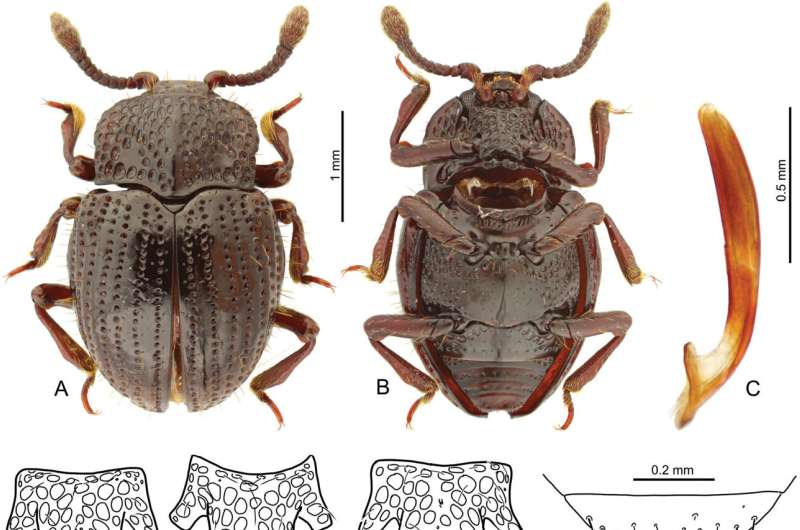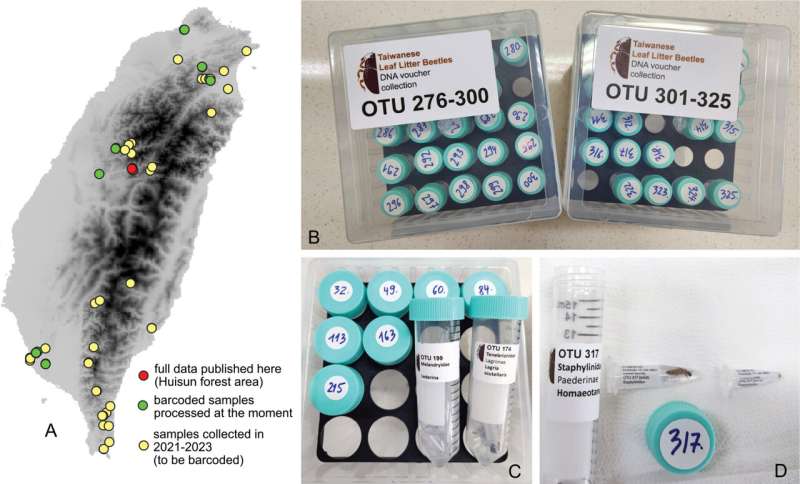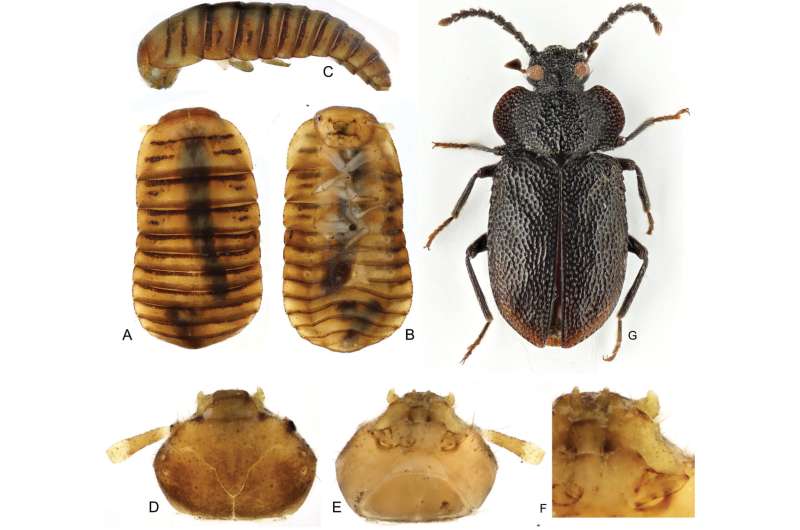This article has been reviewed according to Science X's editorial process and policies. Editors have highlighted the following attributes while ensuring the content's credibility:
fact-checked
trusted source
proofread
Unveiling hidden biodiversity underfoot: DNA barcoding of Taiwanese forest leaf litter beetles

Forest leaf litter, often likened to terrestrial coral reefs, supports an astonishing variety of life. Among the myriad arthropods dwelling in this ecosystem, beetles emerge as the most common and speciose group. Despite their abundance, our understanding of leaf litter beetles remains limited due to the challenges posed by their sheer numbers, small sizes, and high local endemism.
To overcome these challenges, a team of researchers has initiated the Taiwanese Leaf Litter Beetles Barcoding project. Leveraging DNA barcoding, the project aims to create a comprehensive reference library for these elusive beetles. DNA barcoding, a technique using short mitochondrial fragments, accelerates the analysis of entire faunas and aids in the identification of species. The goal is to provide a valuable resource for researchers, ecologists, conservation biologists, and the public.
The success of the Taiwanese Leaf Litter Beetles Barcoding project hinges on the invaluable contribution of taxonomists, who play a pivotal role in this groundbreaking research. Recognizing the specialized knowledge required for precise genus and species identifications, the researchers diligently consulted with specialists for each family represented in the extensive dataset.
In cases where these taxonomic experts provided crucial assistance, they were not merely acknowledged but offered co-authorship, acknowledging the significant commitment and expertise they bring to the project. Many taxonomists devote their entire lives to the meticulous study of specific beetle groups, and this collaboration underscores the importance of their dedication. The researchers emphasize the fairness of extending co-authorship to these taxonomic experts, acknowledging their indispensable role in advancing our understanding of Taiwan's leaf litter beetle fauna.

Rich beetle diversity in Taiwan
Taiwan, nestled in the western Pacific, boasts a rich biodiversity resulting from its location at the crossroads of the Oriental and Palearctic biogeographical regions. Beetles, with more than 7,700 recorded species belonging to 119 families, stand out as a particularly diverse insect order on the island. Despite this wealth of species, taxonomic research on beetles in Taiwan has been fragmented, and the study of leaf litter beetles has relied heavily on collections from past decades.
The current dataset, based on specimens collected in the Huisun Recreation Forest Area in 2019–2021, comprises 4,629 beetles representing 334 species candidates from 36 families. The DNA barcoding approach has not only allowed for efficient species identification but has also provided a glimpse into the intricate world of beetle larvae, enhancing our understanding of their biology and ecological roles. This comprehensive dataset marks a significant step forward in unraveling the mysteries of Taiwan's diverse beetle fauna.

Project goals, progress, and future outlook
The Taiwanese Leaf Litter Beetles Barcoding project is dedicated to a three-fold mission: conducting an extensive study of leaf litter beetles, documenting their diversity in Taiwan, and providing a reliable tool for quick identification. The researchers have published the first set of DNA barcodes in Deutsche Entomologische Zeitschrift, unveiling taxonomic insights such as the description of a new species and several newly recorded taxa.
While the dataset is geographically limited to a single forest reserve in central Taiwan, it efficiently demonstrates the challenges of studying subtropical and tropical leaf litter beetle faunas. The integration of DNA barcoding and morphology proves instrumental in unraveling the mysteries of this species-diverse ecosystem. Looking ahead, the team plans to expand their sampling across Taiwan, covering diverse regions, altitudinal zones, and forest types.
Continuous updates to the DNA barcode dataset will serve as a valuable resource for future studies, maintaining a balanced approach that recognizes DNA barcoding as an efficient complement to traditional taxonomic methods.
More information: Fang-Shuo Hu et al, Forest leaf litter beetles of Taiwan: first DNA barcodes and first insight into the fauna, Deutsche Entomologische Zeitschrift (2024). DOI: 10.3897/dez.71.112278
Provided by Pensoft Publishers
















